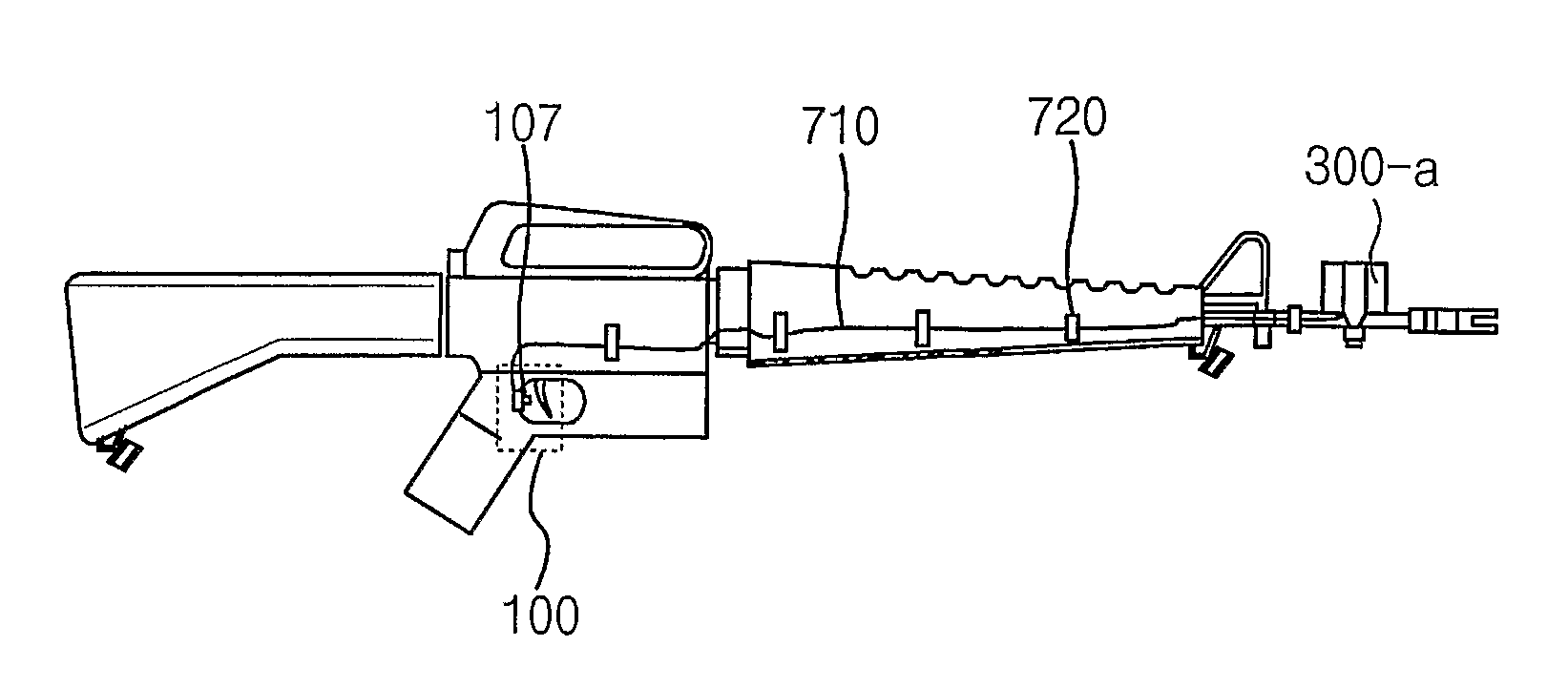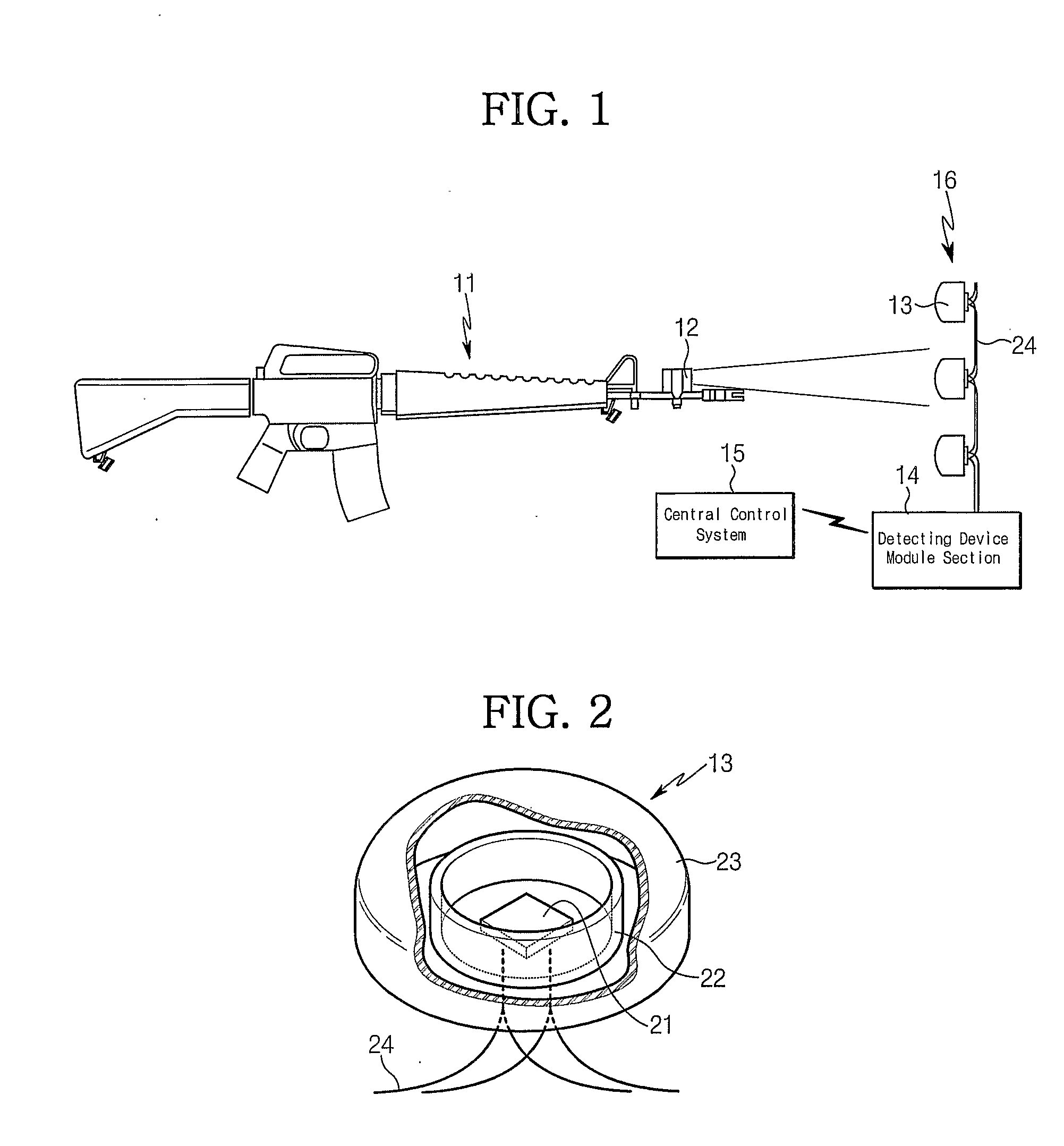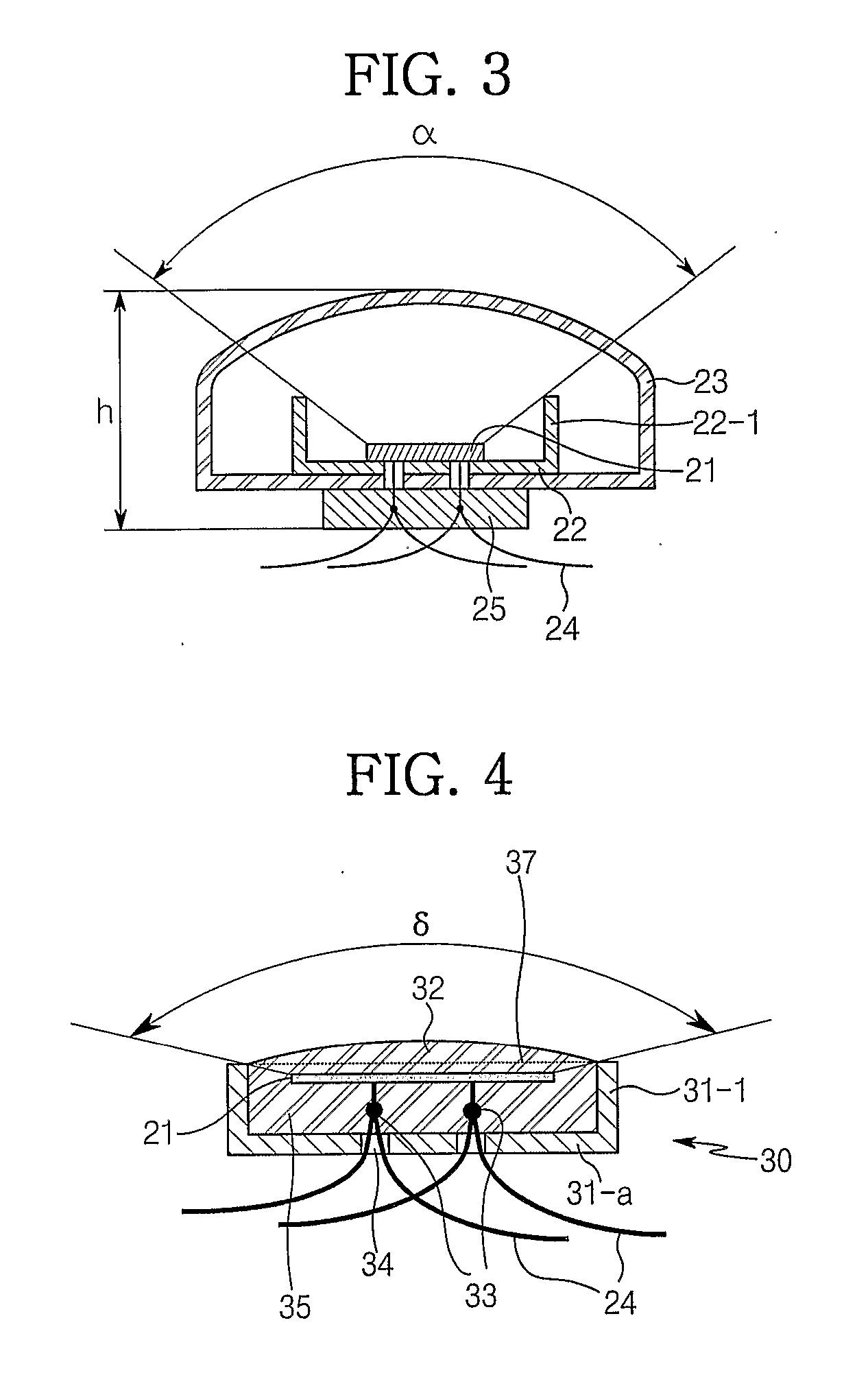Structure of Detecting Device Used in Miles System and Gun Simulator
a technology of detecting device and gun simulator, which is applied in the direction of optical radiation measurement, instruments, teaching apparatus, etc., can solve the problems of narrow optical sight angle, inability to receive light, and increase the probability of erroneously determining that the laser light has missed a target, so as to maximize the efficiency of handling equipment
- Summary
- Abstract
- Description
- Claims
- Application Information
AI Technical Summary
Benefits of technology
Problems solved by technology
Method used
Image
Examples
Embodiment Construction
[0073] Best modes for carrying out the present invention will now be described with reference to the accompanying drawings. The matters defined in the description are nothing but the ones provided to assist in a comprehensive understanding of the invention. Thus, it is apparent that the present invention can be carried out without those defined matters. Also, well-known functions or constructions are not described in detail since they would obscure the invention in unnecessary detail.
[0074]FIG. 1 is a schematic diagram of a MILES. The MILES as shown in FIG. 1 is operated in the following manner.
[0075] If a soldier pulls a trigger of individual or public firearms 11 after aiming a target, a blank cartridge, etc. is shot from the firearms 11. At this stage, an acoustic sensor or an optical sensor inside of a SAT 12 senses the sound or light generated at that time and activates an infrared layer laser diode mounted on the SAT 12. Then, the infrared layer laser of a pulse type is shot...
PUM
 Login to View More
Login to View More Abstract
Description
Claims
Application Information
 Login to View More
Login to View More - R&D
- Intellectual Property
- Life Sciences
- Materials
- Tech Scout
- Unparalleled Data Quality
- Higher Quality Content
- 60% Fewer Hallucinations
Browse by: Latest US Patents, China's latest patents, Technical Efficacy Thesaurus, Application Domain, Technology Topic, Popular Technical Reports.
© 2025 PatSnap. All rights reserved.Legal|Privacy policy|Modern Slavery Act Transparency Statement|Sitemap|About US| Contact US: help@patsnap.com



